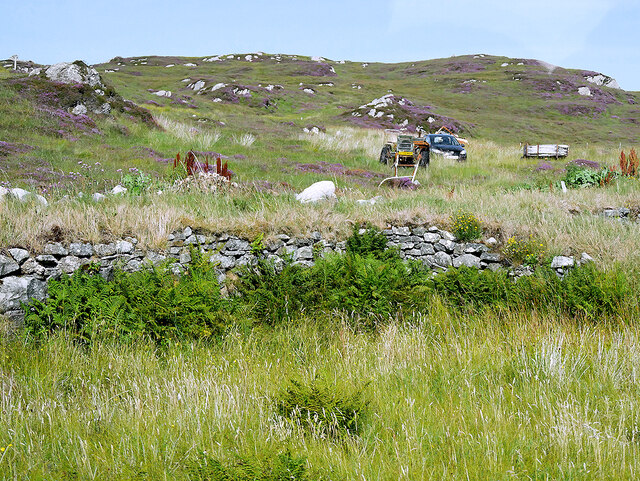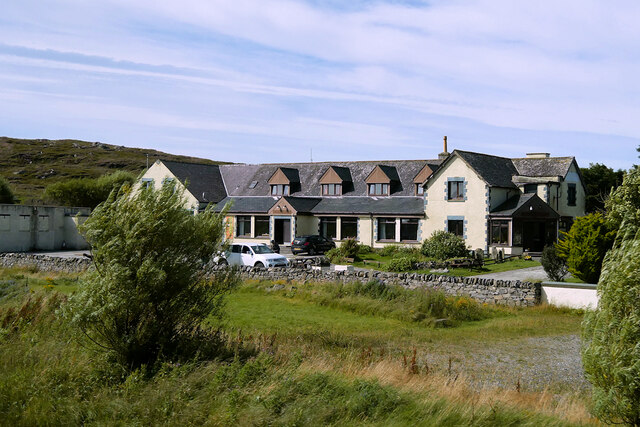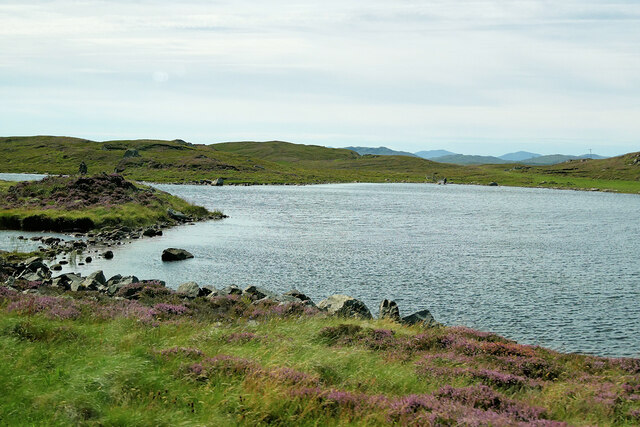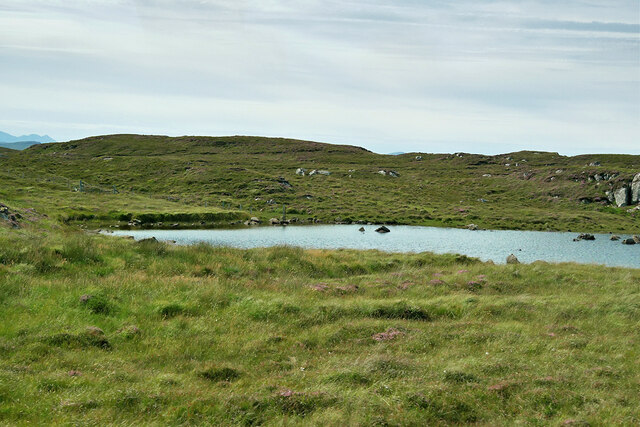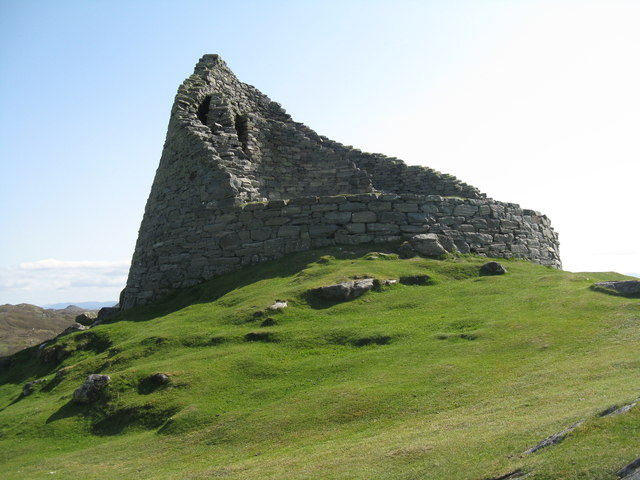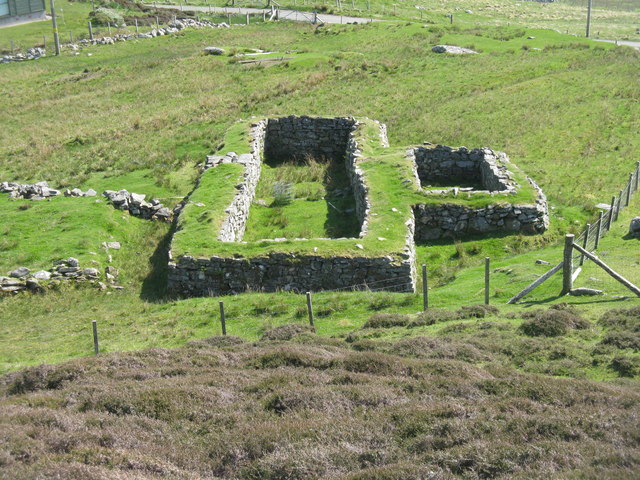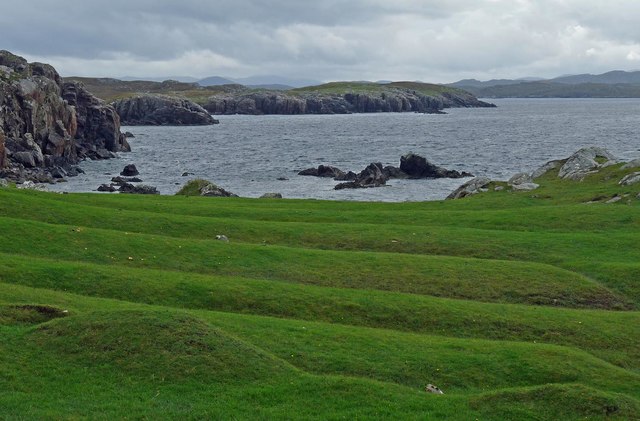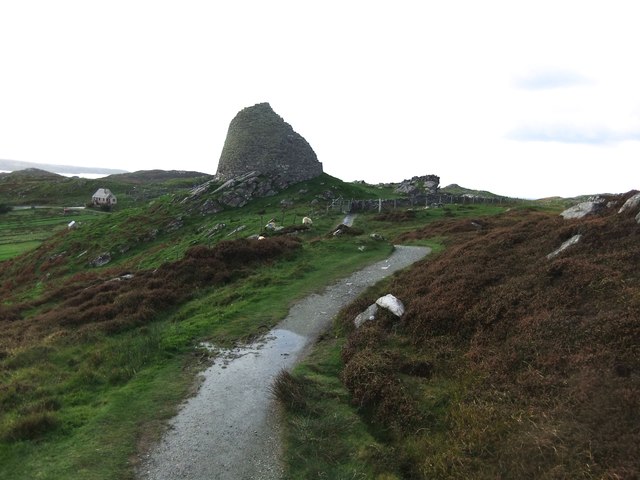Cnoc na Buaile
Hill, Mountain in Ross-shire
Scotland
Cnoc na Buaile
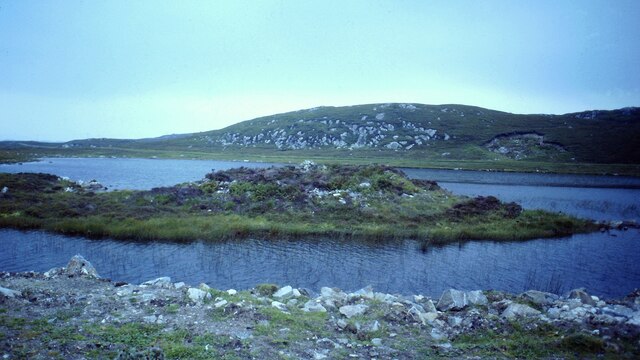
Cnoc na Buaile is a prominent hill located in Ross-shire, Scotland. Situated in the stunning Scottish Highlands, it is a popular destination for outdoor enthusiasts and nature lovers alike.
Rising to a height of approximately 537 meters (1,762 feet), Cnoc na Buaile offers breathtaking panoramic views of the surrounding landscape. Its position within the Highlands means that on a clear day, visitors can enjoy vistas of rugged mountains, rolling hills, and sparkling lochs stretching as far as the eye can see.
The hill is covered in a mixture of heather, grass, and scattered rocks, creating a picturesque and diverse terrain. It is home to a variety of flora and fauna, including wildflowers, mosses, and small mammals such as rabbits and hares.
Outdoor activities such as hiking and hillwalking are popular on Cnoc na Buaile, with several well-marked trails leading to the summit. The ascent can be challenging in places, but the effort is rewarded with breathtaking views and a sense of accomplishment.
The hill is easily accessible, located just a short drive from nearby towns and villages. There are also parking facilities available at the base of the hill for those traveling by car.
Overall, Cnoc na Buaile is a magnificent natural landmark in Ross-shire, offering visitors the opportunity to immerse themselves in the beauty of the Scottish Highlands and enjoy outdoor activities in a stunning setting.
If you have any feedback on the listing, please let us know in the comments section below.
Cnoc na Buaile Images
Images are sourced within 2km of 58.259785/-6.8051533 or Grid Reference NB1840. Thanks to Geograph Open Source API. All images are credited.
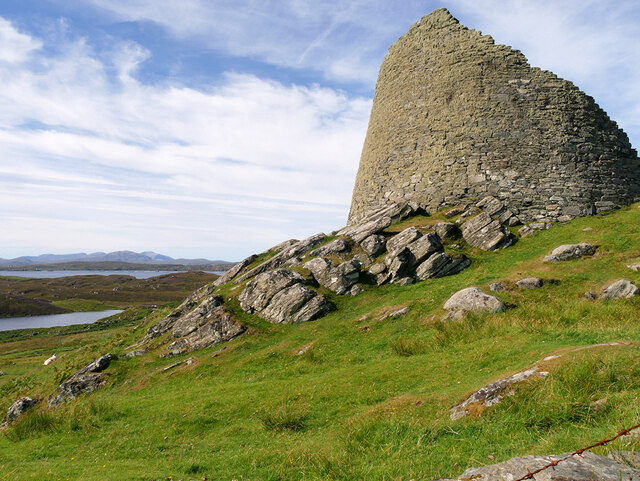
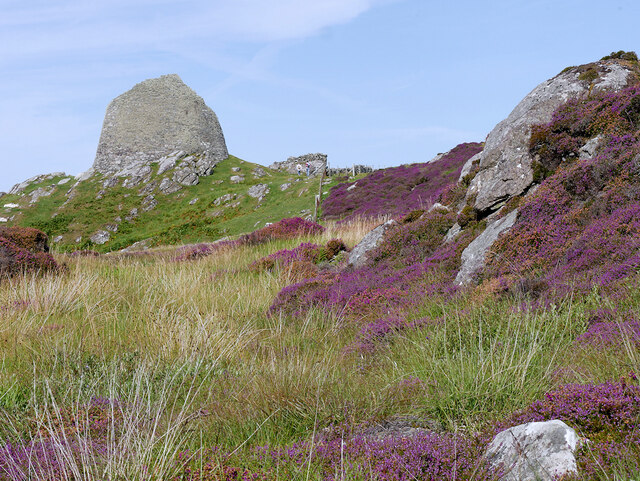
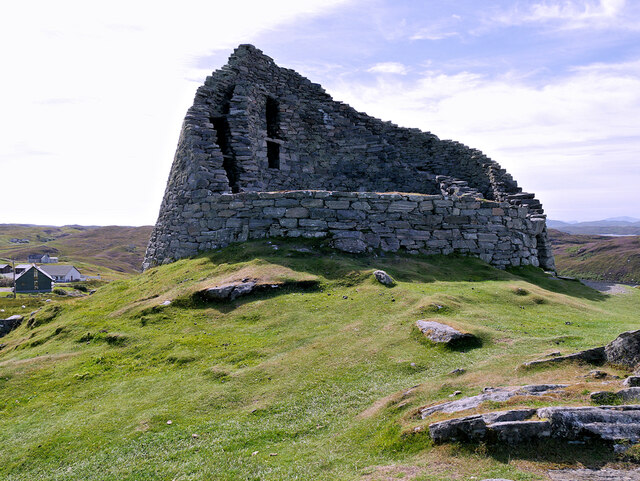
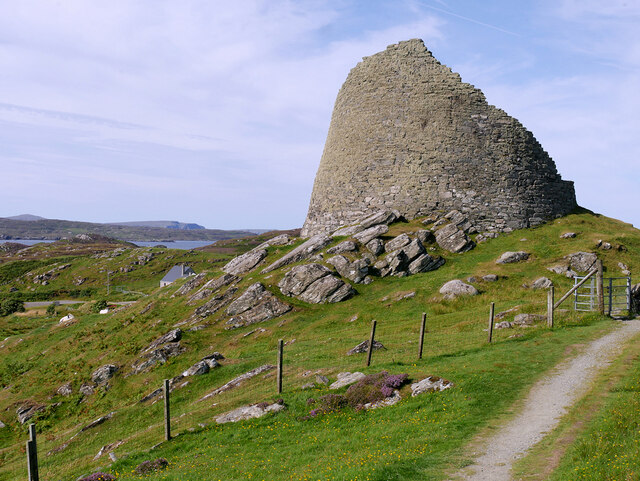
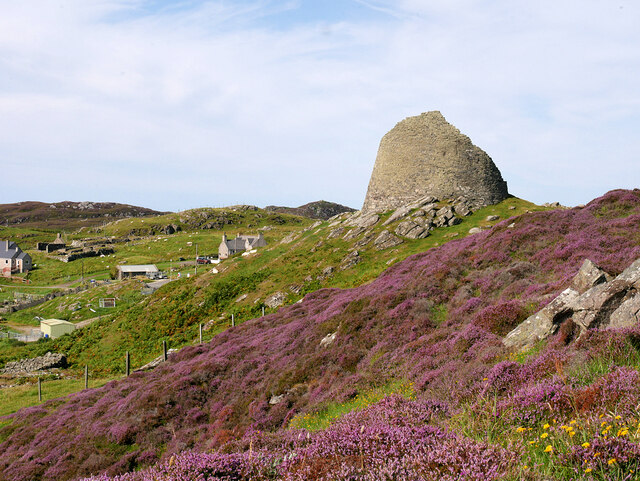
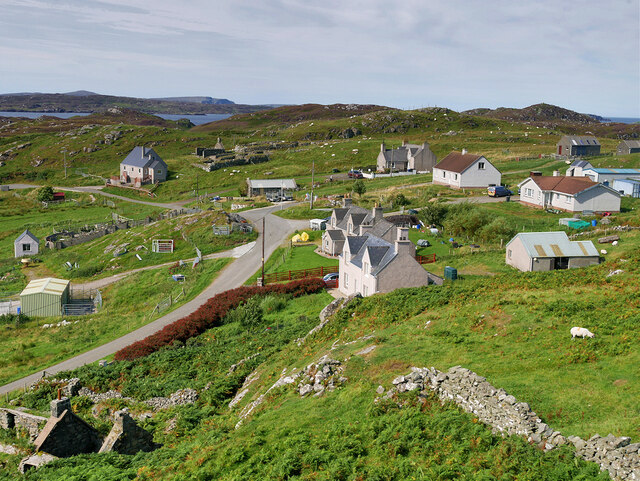
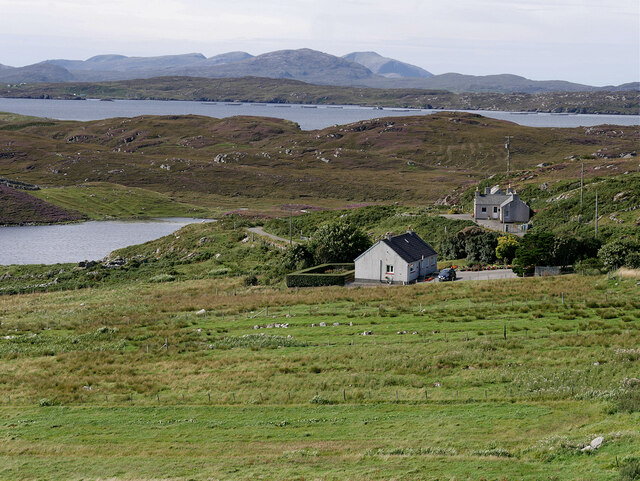
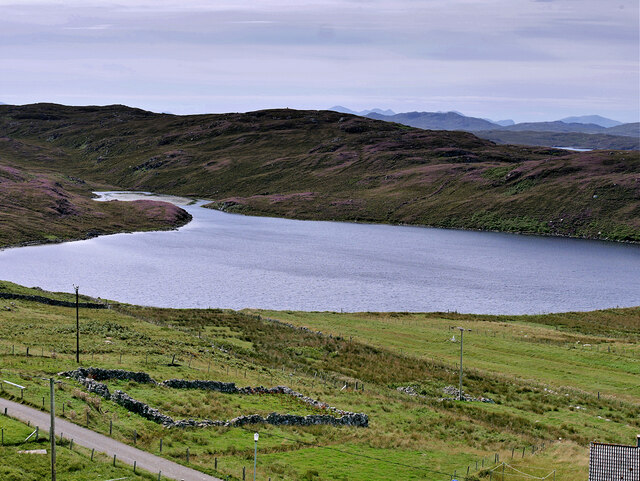
Cnoc na Buaile is located at Grid Ref: NB1840 (Lat: 58.259785, Lng: -6.8051533)
Unitary Authority: Na h-Eileanan an Iar
Police Authority: Highlands and Islands
What 3 Words
///crown.sides.engraving. Near Carloway, Na h-Eileanan Siar
Nearby Locations
Related Wikis
Dun Carloway
Dun Carloway (Scottish Gaelic: Dùn Chàrlabhaigh) is a broch situated in the district of Carloway, on the west coast of the Isle of Lewis, Scotland (grid...
Borrowston, Lewis
Borrowston (Scottish Gaelic: Borghastan), with a population of about 50, is a crofting township situated on the Isle of Lewis, on the Outer Hebrides of...
Tolsta Chaolais
Tolsta Chaolais (also Tolastadh Chaolais, Tolstadh a' Chaolais) is a village on the Isle of Lewis, Scotland. It consists of about forty houses, clustered...
Carloway
Carloway (Scottish Gaelic: Càrlabhagh [ˈkʰaːɾɫ̪ə.ɤː]) is a crofting township and a district on the west coast of the Isle of Lewis, in the Outer Hebrides...
Breaclete
Breacleit (or Roulanish; Scottish Gaelic: Breacleit; Old Norse: Breiðiklettr) is the central village on Great Bernera in the Outer Hebrides, Scotland....
Little Bernera
Little Bernera (Scottish Gaelic: Beàrnaraigh Beag) is a small island situated off the west coast of the Isle of Lewis in the Outer Hebrides.Little Bernera...
Cealasaigh
Cealasaigh or Kealasay is an islet in outer Loch Ròg, Lewis, Scotland that lies north of Traigh Mhór on Little Bernera and south of Campaigh. To the west...
Garenin
Garenin (Scottish Gaelic: Na Gearrannan) is a crofting township on the west coast of the Isle of Lewis in the Outer Hebrides of Scotland. Garenin is in...
Nearby Amenities
Located within 500m of 58.259785,-6.8051533Have you been to Cnoc na Buaile?
Leave your review of Cnoc na Buaile below (or comments, questions and feedback).
